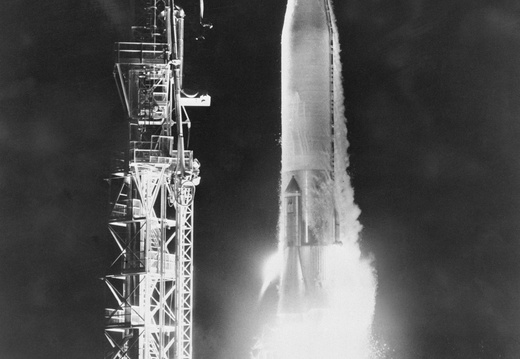
BIG JOE 1
Mission: Big Joe 1
Launch Pad: LC-14
Vehicle: Big Joe (1) SN 10-D
Crew: Unmanned
Milestones:
Not applicable
Payload:
Boilerplate Spacecraft
Mission Objective:
Test of ablation heatshield. The nose-cone capsule for Big Joe had no retrorocket package. The inner structure held only a half-sized instrumented pressure vessel instead of a pressurized cabin contoured to the outer configuration. Built in two segments, the lower half by Lewis and the upper by Langley, the main body of the spacecraft replica was fabricated with thin sheets of corrugated Inconel alloy in monocoque construction. This model of the Mercury capsule had more than one hundred thermocouples around the capsule skin to register temperatures inside and under the heatshield, sides and afterbody. (Reference NASA SP-4201 p. 201)
The Atlas 10-D was programmed to rise, pitch over horizontally to the Atlantic before it reached its 100-mile peak altitude, then pitch down slightly before releasing its corrugated nose cone at a shallow angle barely below the horizontal.
Orbit:
Altitude: 95 statute miles
Orbits: 0
Duration: 0 Days, 0 hours, 13 minutes, 0 seconds
Distance: 1,496 statute miles
Max Velocity: 14,857 miles per hour
Max Q: 675 psf
Max G. 12
Launch:
September 9, 1959, 3:19am EST, Cape Canaveral, Florida.
The original launch date for Big Joe was July 4, 1959 but the launch date was postponed until mid-August by the Air Force because the booster did not checkout out perfectly at first. Then it was put off until early September by Space Task Group (STG) engineers, who were working on instrumentation and telemetry problems. Finally, the count picked up on September 8, 1959 when the Atlas 10-D (the sixth of this model to be flight tested) stood on the launch pad with a Mercury capsule (minus its escape tower).
About 2:30 a.m. a 19-minute hold in the countdown was called to investigate a peculiar indication from the Burroughs computer that was to guide the launch. A malfunction was found in the Azusa impact prediction beacon, a transponder in the booster. Since there were several redundant means for predicting the impact point, the trouble was ignored and the countdown resumed. Liftoff occurred at 3:19 a.m. EST.
Landing:
About 7 hours after launch, the Destroyer Strong reported that she had netted the boilerplate capsule intact.
Mission Highlights:
The spacecraft test was successful, Launch Vehicle was a failure. The two outboard engines had not separated from the centerline sustainer engine after their fuel was exhausted. The added weight of the booster engines retarded velocity by 3000 feet per second and the capsule separated from the booster 138 seconds too late. The impact point was 500 miles short.
Launch Pad: LC-14
Vehicle: Big Joe (1) SN 10-D
Crew: Unmanned
Milestones:
Not applicable
Payload:
Boilerplate Spacecraft
Mission Objective:
Test of ablation heatshield. The nose-cone capsule for Big Joe had no retrorocket package. The inner structure held only a half-sized instrumented pressure vessel instead of a pressurized cabin contoured to the outer configuration. Built in two segments, the lower half by Lewis and the upper by Langley, the main body of the spacecraft replica was fabricated with thin sheets of corrugated Inconel alloy in monocoque construction. This model of the Mercury capsule had more than one hundred thermocouples around the capsule skin to register temperatures inside and under the heatshield, sides and afterbody. (Reference NASA SP-4201 p. 201)
The Atlas 10-D was programmed to rise, pitch over horizontally to the Atlantic before it reached its 100-mile peak altitude, then pitch down slightly before releasing its corrugated nose cone at a shallow angle barely below the horizontal.
Orbit:
Altitude: 95 statute miles
Orbits: 0
Duration: 0 Days, 0 hours, 13 minutes, 0 seconds
Distance: 1,496 statute miles
Max Velocity: 14,857 miles per hour
Max Q: 675 psf
Max G. 12
Launch:
September 9, 1959, 3:19am EST, Cape Canaveral, Florida.
The original launch date for Big Joe was July 4, 1959 but the launch date was postponed until mid-August by the Air Force because the booster did not checkout out perfectly at first. Then it was put off until early September by Space Task Group (STG) engineers, who were working on instrumentation and telemetry problems. Finally, the count picked up on September 8, 1959 when the Atlas 10-D (the sixth of this model to be flight tested) stood on the launch pad with a Mercury capsule (minus its escape tower).
About 2:30 a.m. a 19-minute hold in the countdown was called to investigate a peculiar indication from the Burroughs computer that was to guide the launch. A malfunction was found in the Azusa impact prediction beacon, a transponder in the booster. Since there were several redundant means for predicting the impact point, the trouble was ignored and the countdown resumed. Liftoff occurred at 3:19 a.m. EST.
Landing:
About 7 hours after launch, the Destroyer Strong reported that she had netted the boilerplate capsule intact.
Mission Highlights:
The spacecraft test was successful, Launch Vehicle was a failure. The two outboard engines had not separated from the centerline sustainer engine after their fuel was exhausted. The added weight of the booster engines retarded velocity by 3000 feet per second and the capsule separated from the booster 138 seconds too late. The impact point was 500 miles short.
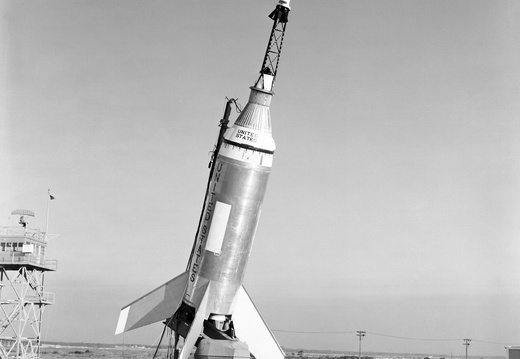
LITTLE JOE 6
Mission: Little Joe 6
Launch Pad: Not available
Vehicle: Little Joe (2)
Crew: Unmanned
Milestones:
Not applicable
Payload:
Boilerplate Spacecraft
Mission Objective:
Test capsule aerodynamics and integrity
Orbit:
Altitude: 37 statute miles
Orbits: 0
Duration: 0 Days, 0 hours, 5 minutes, 10 seconds
Distance: 79 statute miles
Max Velocity: 3,075 miles per hour
Max Q: 3,400 psf
Max G. 5.9
Launch:
October 4, 1959
Landing:
Not applicable
Mission Highlights:
The mission was listed as partially successful.
Launch Pad: Not available
Vehicle: Little Joe (2)
Crew: Unmanned
Milestones:
Not applicable
Payload:
Boilerplate Spacecraft
Mission Objective:
Test capsule aerodynamics and integrity
Orbit:
Altitude: 37 statute miles
Orbits: 0
Duration: 0 Days, 0 hours, 5 minutes, 10 seconds
Distance: 79 statute miles
Max Velocity: 3,075 miles per hour
Max Q: 3,400 psf
Max G. 5.9
Launch:
October 4, 1959
Landing:
Not applicable
Mission Highlights:
The mission was listed as partially successful.
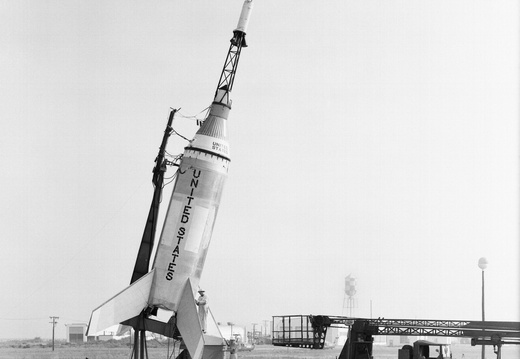
LITTLE JOE 1A
Mission: Little Joe 1A
Launch Pad: Wallops Island Pad
Vehicle: Little Joe (3)
Crew: Unmanned
Milestones:
Not applicable
Payload:
Boilerplate Spacecraft
Mission Objective:
Max Q abort and Escape Test.
Orbit:
Altitude: 9 statute miles
Orbits: 0
Duration: 0 Days, 0 hours, 8 minutes, 11 seconds
Distance: 11 statute miles
Max Velocity: 2,022 miles per hour
Max Q: 168 psf
Max G. 16.9
Launch:
November 4, 1959
The launching of LJ-1A "Little Joe" on November 1959 took place at Wallops Island, Virginia. This was the second attempt to launch an instrumented capsule with a Little Joe booster, The purpose of the flight was to test the escape system under the maximum dynamic pressure conditions of an Atlas flight or about 1,000 pounds per square foot. Though the launch and recovery were successful, researchers were not able to test the escape system at maximum aerodynamic loads on this flight. Subsequent launches were successful and the Little Joe program proved the general concept of the Mercury system to be sound.
Landing:
Not applicable
Mission Highlights:
The mission was listed as a partial success.
Launch Pad: Wallops Island Pad
Vehicle: Little Joe (3)
Crew: Unmanned
Milestones:
Not applicable
Payload:
Boilerplate Spacecraft
Mission Objective:
Max Q abort and Escape Test.
Orbit:
Altitude: 9 statute miles
Orbits: 0
Duration: 0 Days, 0 hours, 8 minutes, 11 seconds
Distance: 11 statute miles
Max Velocity: 2,022 miles per hour
Max Q: 168 psf
Max G. 16.9
Launch:
November 4, 1959
The launching of LJ-1A "Little Joe" on November 1959 took place at Wallops Island, Virginia. This was the second attempt to launch an instrumented capsule with a Little Joe booster, The purpose of the flight was to test the escape system under the maximum dynamic pressure conditions of an Atlas flight or about 1,000 pounds per square foot. Though the launch and recovery were successful, researchers were not able to test the escape system at maximum aerodynamic loads on this flight. Subsequent launches were successful and the Little Joe program proved the general concept of the Mercury system to be sound.
Landing:
Not applicable
Mission Highlights:
The mission was listed as a partial success.
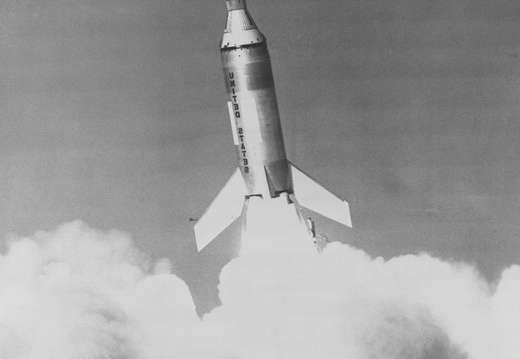
LITTLE JOE 2
Mission: Little Joe 2
Launch Pad: Wallops Island Pad
Vehicle: Little Joe (4)
Crew: Sam (a monkey)
Milestones:
Not applicable
Payload:
Boilerplate Spacecraft
Mission Objective:
Primate escape at high altitude
Orbit:
Altitude: 53 statute miles
Orbits: 0
Duration: 0 Days, 0 hours, 11 minutes, 6 seconds
Distance: 194 statute miles
Velocity: 4,466 miles per hour
Max Q: 2,150 psf
Max G: 14.8
Launch:
December 4, 1959 Wallops Island
Landing:
Not applicable
Mission Highlights:
Mission was successful. Weightless time 3 minutes, 13 seconds.
Launch Pad: Wallops Island Pad
Vehicle: Little Joe (4)
Crew: Sam (a monkey)
Milestones:
Not applicable
Payload:
Boilerplate Spacecraft
Mission Objective:
Primate escape at high altitude
Orbit:
Altitude: 53 statute miles
Orbits: 0
Duration: 0 Days, 0 hours, 11 minutes, 6 seconds
Distance: 194 statute miles
Velocity: 4,466 miles per hour
Max Q: 2,150 psf
Max G: 14.8
Launch:
December 4, 1959 Wallops Island
Landing:
Not applicable
Mission Highlights:
Mission was successful. Weightless time 3 minutes, 13 seconds.
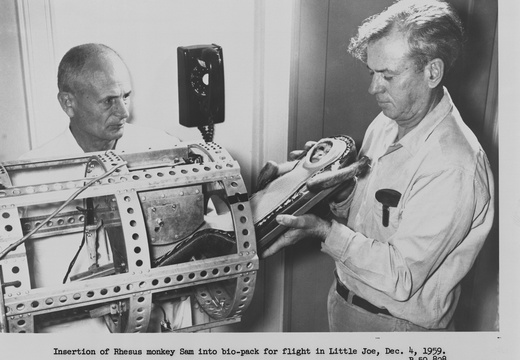
LITTLE JOE 1B
Mission: Little Joe 1B
Launch Pad: Wallops Island Pad
Vehicle: Little Joe (5)
Crew: Miss Sam (a monkey)
Milestones:
Not applicable
Payload:
Boilerplate Spacecraft
Mission Objective:
Max Q abort and Escape Test.
Orbit:
Altitude: 9 statute miles
Orbits: 0
Duration: 0 Days, 0 hours, 8 minutes, 35 seconds
Distance: 12 statute miles
Velocity: 2,022 miles per hour
Max Q: 1,070 psf
Max G: 4.5
Launch:
January 21, 1960 Wallops Island
Landing:
Not applicable
Mission Highlights:
Mission was successful. Weightless time 28 seconds.
Launch Pad: Wallops Island Pad
Vehicle: Little Joe (5)
Crew: Miss Sam (a monkey)
Milestones:
Not applicable
Payload:
Boilerplate Spacecraft
Mission Objective:
Max Q abort and Escape Test.
Orbit:
Altitude: 9 statute miles
Orbits: 0
Duration: 0 Days, 0 hours, 8 minutes, 35 seconds
Distance: 12 statute miles
Velocity: 2,022 miles per hour
Max Q: 1,070 psf
Max G: 4.5
Launch:
January 21, 1960 Wallops Island
Landing:
Not applicable
Mission Highlights:
Mission was successful. Weightless time 28 seconds.
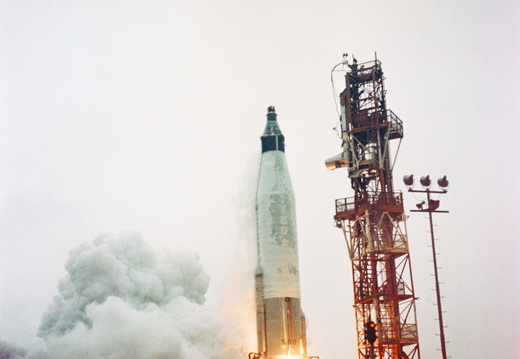
MERCURY-ATLAS 1
Mission: Mercury-Atlas 1
Launch Pad: LC-14
Vehicle: Atlas (1)
Crew: Unmanned
Milestones:
Not applicable
Payload:
Spacecraft number 4, Launch Vehicle 50-D
Mission Objective:
Qualify spacecraft and Atlas combination. The specific test ojectives were:
Recover the capsule Determine the structral integrity of the Mercury capsule structure and afterbody shingles under the maximum heating conditions which could be encountered from an orbital launch Determine Mercury capsule afterbody heading rates during reentry (for this purpose 51 thermocouples were installed) Determine the flight dynamic characteristics of the Mercury capsule during reentry Determine the adequacy of the Mercury capsule recovery systems Familiarize Project Mercury personnel with launch and recovery opperations
Orbit:
Altitude: 8.1 statute miles
Orbits: 0
Duration: 0 Days, 0 hours, 0 minutes, 0 seconds
Distance: 6 statute miles
Max Velocity: 1,701 miles per hour
Launch:
July 29, 1960
Landing:
Not applicable
Mission Highlights:
Mission was listed as a failure.
Launch Pad: LC-14
Vehicle: Atlas (1)
Crew: Unmanned
Milestones:
Not applicable
Payload:
Spacecraft number 4, Launch Vehicle 50-D
Mission Objective:
Qualify spacecraft and Atlas combination. The specific test ojectives were:
Recover the capsule Determine the structral integrity of the Mercury capsule structure and afterbody shingles under the maximum heating conditions which could be encountered from an orbital launch Determine Mercury capsule afterbody heading rates during reentry (for this purpose 51 thermocouples were installed) Determine the flight dynamic characteristics of the Mercury capsule during reentry Determine the adequacy of the Mercury capsule recovery systems Familiarize Project Mercury personnel with launch and recovery opperations
Orbit:
Altitude: 8.1 statute miles
Orbits: 0
Duration: 0 Days, 0 hours, 0 minutes, 0 seconds
Distance: 6 statute miles
Max Velocity: 1,701 miles per hour
Launch:
July 29, 1960
Landing:
Not applicable
Mission Highlights:
Mission was listed as a failure.
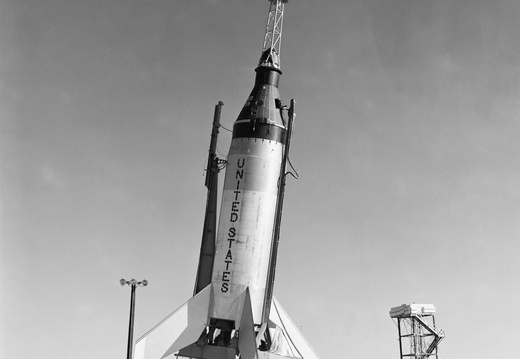
LITTLE JOE 5
Mission: Little Joe 5
Launch Pad: Unavailable
Vehicle: Little Joe (5)
Crew: Unmanned
Milestones:
Not applicable
Payload:
Spacecraft number 3
Mission Objective:
Qualify MAC Spacecraft for Maxiumum Q
Orbit:
Altitude: 10.1 statute miles
Orbits: 0
Duration: 0 Days, 0 hours, 2 minutes, 22 seconds
Distance: 14 statute miles
Velocity: 1,785 miles per hour
Max Q: 1,420 psf
Max G: 6
Launch:
November 8, 1960
Landing:
Not applicable
Mission Highlights:
Mission was listed as a failure.
Launch Pad: Unavailable
Vehicle: Little Joe (5)
Crew: Unmanned
Milestones:
Not applicable
Payload:
Spacecraft number 3
Mission Objective:
Qualify MAC Spacecraft for Maxiumum Q
Orbit:
Altitude: 10.1 statute miles
Orbits: 0
Duration: 0 Days, 0 hours, 2 minutes, 22 seconds
Distance: 14 statute miles
Velocity: 1,785 miles per hour
Max Q: 1,420 psf
Max G: 6
Launch:
November 8, 1960
Landing:
Not applicable
Mission Highlights:
Mission was listed as a failure.
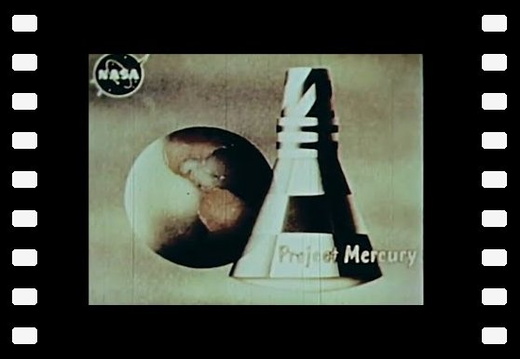
MERCURY-REDSTONE 1
Mission: Mercury-Redstone 1
Launch Pad: LC-5
Vehicle: Redstone (1)
Crew: Unmanned
Milestones:
Not applicable
Payload:
Spacecraft number 2, Launch Vehicle MR-1
Mission Objective:
Qualify spacecraft/Redstone combination
Orbit:
Altitude: 0 statute miles
Orbits: 0
Duration: 0 Days, 0 hours, 0 minutes, 2 seconds
Distance: 0 statute miles
Launch:
November 21, 1960
Landing:
Not applicable
Mission Highlights:
Mission was as a failure.
Launch Pad: LC-5
Vehicle: Redstone (1)
Crew: Unmanned
Milestones:
Not applicable
Payload:
Spacecraft number 2, Launch Vehicle MR-1
Mission Objective:
Qualify spacecraft/Redstone combination
Orbit:
Altitude: 0 statute miles
Orbits: 0
Duration: 0 Days, 0 hours, 0 minutes, 2 seconds
Distance: 0 statute miles
Launch:
November 21, 1960
Landing:
Not applicable
Mission Highlights:
Mission was as a failure.
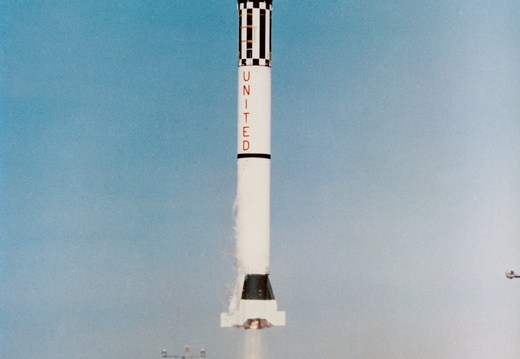
MERCURY-REDSTONE 1A
Mission: Mercury-Redstone 1A
Launch Pad: LC-5
Vehicle: Redstone (2)
Crew: Unmanned
Milestones:
Not applicable
Payload:
Spacecraft number 2A, Launch Vehicle MR-3
Mission Objective:
Qualify systems for suborbital operations
Orbit:
Altitude: 130.7 statute miles
Orbits: 0
Duration: 0 Days, 0 hours, 15 minutes, 45 seconds
Distance: 235 statute miles
Velocity: 4,909 miles per hour
Max Q: 560 psf
Max G: 12.4
Launch:
December 19, 1960
Landing:
Not applicable
Mission Highlights:
Mission was successful. Weightless time 5 minutes 30 seconds.
Launch Pad: LC-5
Vehicle: Redstone (2)
Crew: Unmanned
Milestones:
Not applicable
Payload:
Spacecraft number 2A, Launch Vehicle MR-3
Mission Objective:
Qualify systems for suborbital operations
Orbit:
Altitude: 130.7 statute miles
Orbits: 0
Duration: 0 Days, 0 hours, 15 minutes, 45 seconds
Distance: 235 statute miles
Velocity: 4,909 miles per hour
Max Q: 560 psf
Max G: 12.4
Launch:
December 19, 1960
Landing:
Not applicable
Mission Highlights:
Mission was successful. Weightless time 5 minutes 30 seconds.
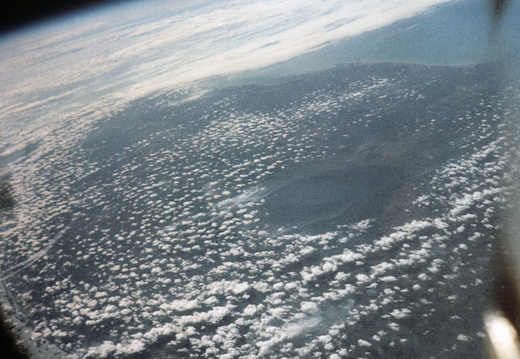
MERCURY-REDSTONE 2
Mission: Mercury-Redstone 2
Launch Pad: LC-5
Vehicle: Redstone (3)
Crew: Ham the Chimp
Milestones:
Not applicable
Payload:
Spacecraft number 5, Launch Vehicle MR-2
Mission Objective:
Primate suborbital and auto abort.
Orbit:
Altitude: 127 statute miles
Orbits: 0
Duration: 0 Days, 0 hours, 16 minutes, 39 seconds
Distance: 422 statute miles
Velocity: 5,857 miles per hour
Max Q: 575 psf
Max G: 14.7
Launch:
January 31, 1961 - Launch Complex 5/6 Kennedy Space Center, Florida
Landing:
Touchdown was at 12:12 p.m. with the capsule about 60 miles from the nearest recovery ship, the destroyer Ellison. Some 27 minutes after landing, a P2V search plane sighted the capsule floating upright alone in the Atlantic. The Navy dispatched helicopters from the next closest ship, the LSD Donner. Wave action after impact punched two holes in the titanium pressure bulkhead and caused the capsule to capsize. Water entered an open relief valve and allowed 800 lbs of sea water aboard before the spacecraft was recovered at 2:52 p.m. The chimpanzee Ham was recovered in good condition.
Mission Highlights:
Spacecraft was successful. The launch vehicle was only partially successful.
Launch Pad: LC-5
Vehicle: Redstone (3)
Crew: Ham the Chimp
Milestones:
Not applicable
Payload:
Spacecraft number 5, Launch Vehicle MR-2
Mission Objective:
Primate suborbital and auto abort.
Orbit:
Altitude: 127 statute miles
Orbits: 0
Duration: 0 Days, 0 hours, 16 minutes, 39 seconds
Distance: 422 statute miles
Velocity: 5,857 miles per hour
Max Q: 575 psf
Max G: 14.7
Launch:
January 31, 1961 - Launch Complex 5/6 Kennedy Space Center, Florida
Landing:
Touchdown was at 12:12 p.m. with the capsule about 60 miles from the nearest recovery ship, the destroyer Ellison. Some 27 minutes after landing, a P2V search plane sighted the capsule floating upright alone in the Atlantic. The Navy dispatched helicopters from the next closest ship, the LSD Donner. Wave action after impact punched two holes in the titanium pressure bulkhead and caused the capsule to capsize. Water entered an open relief valve and allowed 800 lbs of sea water aboard before the spacecraft was recovered at 2:52 p.m. The chimpanzee Ham was recovered in good condition.
Mission Highlights:
Spacecraft was successful. The launch vehicle was only partially successful.
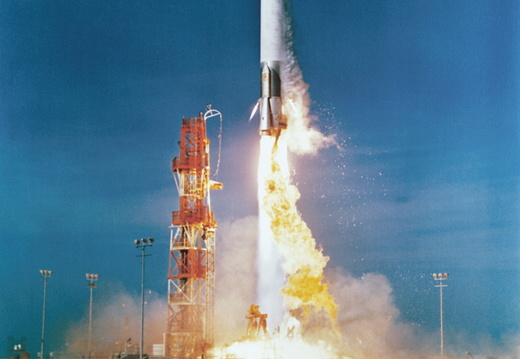
MERCURY-ATLAS 2
Mission: Mercury-Atlas 2
Launch Pad: LC-14
Vehicle: Atlas (2)
Crew: Unmanned
Milestones:
Not applicable
Payload:
Spacecraft number 6, Launch Vehicle number 67-D
Mission Objective:
Qualify Mercury Atlas interfaces.
Orbit:
Altitude: 114 statute miles
Orbits: 0
Duration: 0 Days, 0 hours, 17 minutes, 56 seconds
Distance: 1,432 statute miles
Velocity: 13,227 miles per hour
Max Q: 991 psf
Max G: 15.9
Launch:
February 21, 1961
Landing:
Not Applicable
Mission Highlights:
The mission was successful.
Launch Pad: LC-14
Vehicle: Atlas (2)
Crew: Unmanned
Milestones:
Not applicable
Payload:
Spacecraft number 6, Launch Vehicle number 67-D
Mission Objective:
Qualify Mercury Atlas interfaces.
Orbit:
Altitude: 114 statute miles
Orbits: 0
Duration: 0 Days, 0 hours, 17 minutes, 56 seconds
Distance: 1,432 statute miles
Velocity: 13,227 miles per hour
Max Q: 991 psf
Max G: 15.9
Launch:
February 21, 1961
Landing:
Not Applicable
Mission Highlights:
The mission was successful.
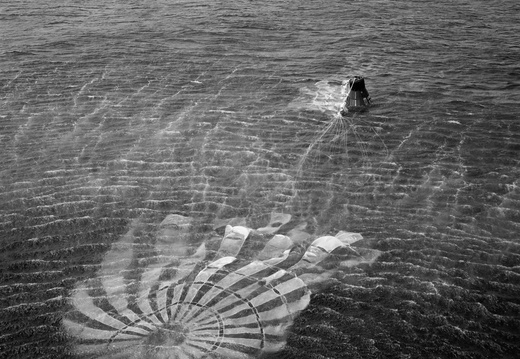
LITTLE JOE 5A
Mission: Little Joe 5A
Launch Pad: Unavailable
Vehicle: Little Joe (7)
Crew: Unmanned
Milestones:
Not applicable
Payload:
Spacecraft number 14
Mission Objective:
Max Q escape and impact test. Purpose was to primarily demonstrate the structural integrity of the highest dynamic pressure anticipated during an Atlas launch for orbital flight.
Orbit:
Altitude: 7.7 statute miles
Orbits: 0
Duration: 0 Days, 0 hours, 22 minutes, 48 seconds
Distance: 18 statute miles
Velocity: 1,783 miles per hour
Max Q: 1,580 psf
Max G: 8
Launch:
The parachutes deployed at 40,000 feet and after recovery the spacecraft actually incurred only superficial structural damage. The spacecraft was later used for the Little Joe 5B (LJ-5B) flight test.
Landing:
Not applicable
Mission Highlights:
Mission was partially successful but the test objectives were not met.
Launch Pad: Unavailable
Vehicle: Little Joe (7)
Crew: Unmanned
Milestones:
Not applicable
Payload:
Spacecraft number 14
Mission Objective:
Max Q escape and impact test. Purpose was to primarily demonstrate the structural integrity of the highest dynamic pressure anticipated during an Atlas launch for orbital flight.
Orbit:
Altitude: 7.7 statute miles
Orbits: 0
Duration: 0 Days, 0 hours, 22 minutes, 48 seconds
Distance: 18 statute miles
Velocity: 1,783 miles per hour
Max Q: 1,580 psf
Max G: 8
Launch:
The parachutes deployed at 40,000 feet and after recovery the spacecraft actually incurred only superficial structural damage. The spacecraft was later used for the Little Joe 5B (LJ-5B) flight test.
Landing:
Not applicable
Mission Highlights:
Mission was partially successful but the test objectives were not met.
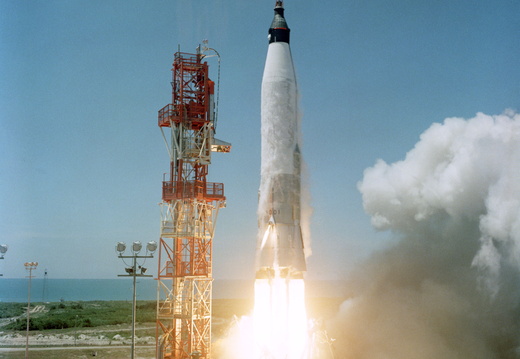
MERCURY-ATLAS 3
Mission: Mercury-Atlas 3
Launch Pad: LC-14
Vehicle: Atlas (3)
Crew: Unmanned, Robot operations
Milestones:
Not applicable
Payload:
Spacecraft number 8, Launch Vehicle number 100-D
Mission Objective:
Quick test of spacecraft/Atlas orbit.
Orbit:
Altitude: 4.5 statute miles
Orbits: 0
Duration: 0 Days, 0 hours, 7 minutes, 19 seconds
Distance: 1,177 statute miles
Max Q: 880 psf
Max G: 11
Launch:
April 25, 1961, 11:15 a.m. EST, Cape Canaveral Air Force Station, Florida. The vehicle was destroyed 40 seconds after liftoff.
Landing:
Not Applicable
Mission Highlights:
The mission was listed as a failure. Forty seconds after the Atlas left the pad, the vehicle was destroyed by the Range Safety Officer. The Mercury spacecraft separated and was recovered.
Launch Pad: LC-14
Vehicle: Atlas (3)
Crew: Unmanned, Robot operations
Milestones:
Not applicable
Payload:
Spacecraft number 8, Launch Vehicle number 100-D
Mission Objective:
Quick test of spacecraft/Atlas orbit.
Orbit:
Altitude: 4.5 statute miles
Orbits: 0
Duration: 0 Days, 0 hours, 7 minutes, 19 seconds
Distance: 1,177 statute miles
Max Q: 880 psf
Max G: 11
Launch:
April 25, 1961, 11:15 a.m. EST, Cape Canaveral Air Force Station, Florida. The vehicle was destroyed 40 seconds after liftoff.
Landing:
Not Applicable
Mission Highlights:
The mission was listed as a failure. Forty seconds after the Atlas left the pad, the vehicle was destroyed by the Range Safety Officer. The Mercury spacecraft separated and was recovered.
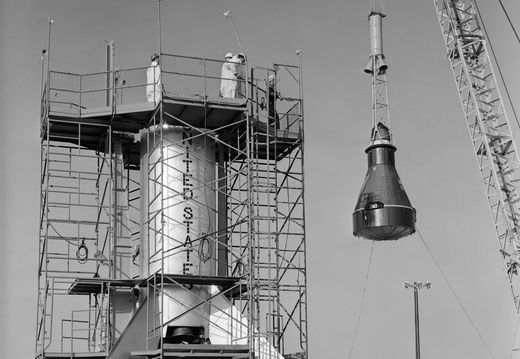
LITTLE JOE 5B
Mission: Little Joe 5B
Launch Pad: Wallops Island Pad
Vehicle: Little Joe (8)
Crew: Unmanned
Milestones:
Not applicable
Payload:
Spacecraft number 14A
Mission Objective:
Max Q escape and sequence
Orbit:
Altitude: 2.8 statute miles
Orbits: 0
Duration: 0 Days, 0 hours, 5 minutes, 25 seconds
Distance: 9 statute miles
Velocity: 1,780 miles per hour
Max Q: 1,920 psf
Max G: 10
Launch:
April 28, 1961, Wallops Island
Landing:
Not applicable
Mission Highlights:
The spacecraft tests were successful, the launch vehicle was partially successful.
Launch Pad: Wallops Island Pad
Vehicle: Little Joe (8)
Crew: Unmanned
Milestones:
Not applicable
Payload:
Spacecraft number 14A
Mission Objective:
Max Q escape and sequence
Orbit:
Altitude: 2.8 statute miles
Orbits: 0
Duration: 0 Days, 0 hours, 5 minutes, 25 seconds
Distance: 9 statute miles
Velocity: 1,780 miles per hour
Max Q: 1,920 psf
Max G: 10
Launch:
April 28, 1961, Wallops Island
Landing:
Not applicable
Mission Highlights:
The spacecraft tests were successful, the launch vehicle was partially successful.
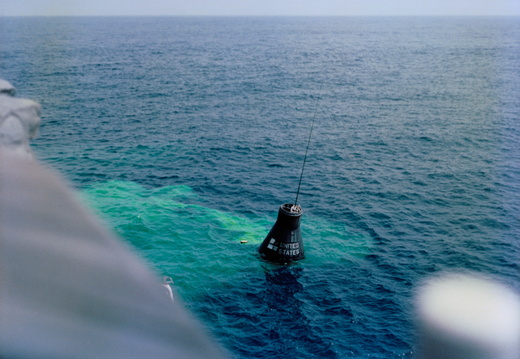
MERCURY-ATLAS 4
Mission: Mercury-Atlas 4
Launch Pad: LC-14
Vehicle: Atlas (4)
Crew: Unmanned, Robot operations
Milestones:
Not applicable
Payload:
Spacecraft number 8A, Launch Vehicle number 88-D
Mission Objective:
Spacecraft environmental control in orbit.
Orbit:
Altitude: 142.1 apogee and 98.9 perigee statute miles
Orbits: 1
Period: 92 minutes, 28 seconds
Duration: 0 Days, 1 hour, 49 minutes, 20 seconds
Distance: 26,047 statute miles
Max Q: 975 psf
Max G: 7.7
Launch:
September 13, 1961
Landing:
Not Applicable
Mission Highlights:
The mission was partially successful.
Launch Pad: LC-14
Vehicle: Atlas (4)
Crew: Unmanned, Robot operations
Milestones:
Not applicable
Payload:
Spacecraft number 8A, Launch Vehicle number 88-D
Mission Objective:
Spacecraft environmental control in orbit.
Orbit:
Altitude: 142.1 apogee and 98.9 perigee statute miles
Orbits: 1
Period: 92 minutes, 28 seconds
Duration: 0 Days, 1 hour, 49 minutes, 20 seconds
Distance: 26,047 statute miles
Max Q: 975 psf
Max G: 7.7
Launch:
September 13, 1961
Landing:
Not Applicable
Mission Highlights:
The mission was partially successful.
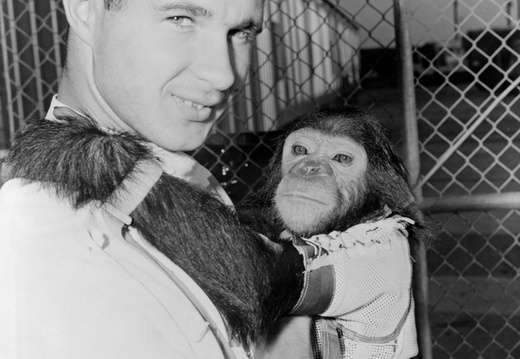
MERCURY-ATLAS 5
Mission: Mercury-Atlas 5
Launch Pad: LC-14
Vehicle: Atlas (5)
Crew: Enos the chimp
Milestones:
Not applicable
Payload:
Spacecraft number 9, Launch Vehicle number 93-D
Mission Objective:
Primate test of Environmental Control System in Orbit.
Orbit:
Altitude: 147.4 apogee by 99.5 perigee statute miles
Orbits: 2
Period: 88 minutes, 26 seconds
Duration: 0 Days, 3 hours, 20 minutes, 59 seconds
Distance: 50,892 statute miles
Launch:
November 29, 1961, Cape Canaveral Air Force Station, Florida.
Landing:
Not Applicable
Mission Highlights:
November 29, 1961, 3 hours and 22 minutes after launch. The capsule was spotted by a P5M search airplane at an altitude of 5,000 feet. The ships Stormes and Compton were contacted and they moved into position from a distance of 30 miles away. The "Stormes" arrived in the area 1 hour and 15 minutes after landing and hauled the capsule aboard via its lanyard, cracking the onboard window.
Enos, the orbiting chimpanzee fared well. He withstood a peak of 6.8g during booster-engine acceleration and 7.6g with the rush of the sustainer engine.
Launch Pad: LC-14
Vehicle: Atlas (5)
Crew: Enos the chimp
Milestones:
Not applicable
Payload:
Spacecraft number 9, Launch Vehicle number 93-D
Mission Objective:
Primate test of Environmental Control System in Orbit.
Orbit:
Altitude: 147.4 apogee by 99.5 perigee statute miles
Orbits: 2
Period: 88 minutes, 26 seconds
Duration: 0 Days, 3 hours, 20 minutes, 59 seconds
Distance: 50,892 statute miles
Launch:
November 29, 1961, Cape Canaveral Air Force Station, Florida.
Landing:
Not Applicable
Mission Highlights:
November 29, 1961, 3 hours and 22 minutes after launch. The capsule was spotted by a P5M search airplane at an altitude of 5,000 feet. The ships Stormes and Compton were contacted and they moved into position from a distance of 30 miles away. The "Stormes" arrived in the area 1 hour and 15 minutes after landing and hauled the capsule aboard via its lanyard, cracking the onboard window.
Enos, the orbiting chimpanzee fared well. He withstood a peak of 6.8g during booster-engine acceleration and 7.6g with the rush of the sustainer engine.